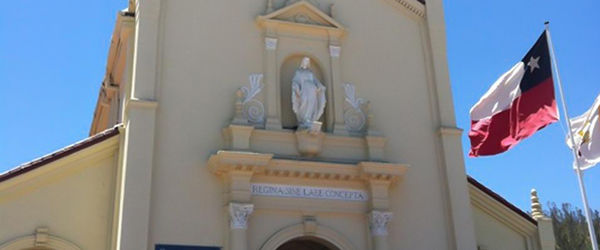My daughter received her First Holy Communion recently, but it was also a last First Communion because all my other children have now passed beyond this most lovely of markers. If there is anything more beautiful than First Holy Communion, I haven’t yet encountered it. First Communion is so pure, so innocent and so wonderful. The boys look spiffed up in black pants and white ties, and the girls in their white dresses foreshadow of distant weddings. The whole family is present — Mom, Dad, siblings, grandparents and other relatives. The Easter white still colors the environment. And in my parish, St. Anastasia in Westchester, each First Communion family makes a banner that hangs around the church. My wife has worked over the years to add extra “bling” to ours with each child.The ceremony is custom made to tug the heart and to call to mind God’s great gifts — family, Church, sacraments. At the center of attention is the child receiving Holy Communion. These second grade children are big enough to understand that the Host is not just a symbol but really is the Body, Blood, Soul and Divinity of Christ. These children are little enough to speak with childish lisps and to have the wonder and the frolic of toddlers. Second grade is a wonderful age perched square between adulthood and babyhood with a distinctive charm of its own. First Holy Communion naturally brings to mind the whole arch of a human life. At such times, we remember the birth of the child, the baptism and the first day of school. At such times, we look forward to graduations, weddings and the birth of grandchildren. At such times, too, it is hard not to be overwhelmed with the generosity of God. It is hard to even be aware, let alone count, all that God has done for us. God gave us this child, protected and fostered the child’s growth, and now we see this child growing closer to God, indeed becoming united with God in the Sacrament. The innocence, purity and beauty of each child unites with the perfect innocence, purity and beauty of God. At St. Anastasia, a song is sung before the consecration, naming each of the first communicants: “Mary, William, Catherine, and George, will you come and follow me now? Elizabeth, Caroline, John-Paul, and Jennifer, will you come and follow me now?” The children answer, “Yes, Lord, yes. Yes, Lord, yes. Yes, Lord I will come and follow you, follow you wherever you go.” As each child is called individually by name, he or she goes forward around the altar to witness as the bread and wine are transformed into the Body and Blood of Christ. This, too, has its present and future meaning. Each of them is called by God, here and now, to grow deeper in faith through the reception of the Sacrament. And each of them will also be called by God some years from now to choose a way of service to God and to their neighbors — as a married person, single person, priest, sister, or brother. Whatever path is chosen, whatever place is taken up in the Body of Christ, whatever the circumstances of their lives, this invitation always remains extended — to join together at the Lord’s table.At the time of Communion, each child comes forward with his or her parents to receive for the very first time. Mom, Dad and God cooperated in making the child; Mom, Dad and God cooperated in baptizing the child; and now Mom, Dad and God are together in receiving First Holy Communion. After Mass is over, the children, priests and those who prepared them, gather on the back steps of the church for a group photo as the cars on Manchester Boulevard slow down to see. Lots of people honk and give the thumbs-up sign, some perhaps recalling their own First Communion. Then our family returns home to celebrate together with grandparents, relatives and friends. Photos are taken, rosaries received, food consumed. Last Saturday was the last time I’ll ever get to experience this delightful passage, and it was an experience to be savored. We all need these small foretastes of heaven.Dr. Christopher Kaczor is Acting Chair and Professor of Philosophy at Loyola Marymount University in Los Angeles. His books include “How to Stay Catholic in College” (Catholic Answers, 2007) and “The Seven Big Myths About the Catholic Church” (Ignatius Press, 2012).{gallery width=100 height=100}gallery/2013/0531/kaczor/{/gallery}

